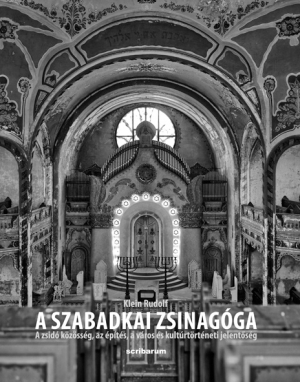The Synagogue in Subotica
The Synagogue in Subotica / Rudolf Klein
Scribarum (Subotica), 2015
Book presentation, FUGA Budapest Center of Architecture, 26 January 2016, 6 pm

The book presented by Dr. Gergely Domonkos Nagy
The synagogue of Subotica is the only surviving Hungarian art nouveau Jewish place of worship in the world. Erected by a prosperous Jewish community of some 3000 souls between 1901 and 1903, it highlights the double, Hungarian-Jewish identity of its builders, who lived in a multi-ethnic, but predominantly Catholic city, which was the third largest of the Hungarian Kingdom and the tenth largest of the Habsburg Empire.
The community hired a not yet established tandem of Hungarian art nouveau architects from Budapest, Dezs┼æ Jakab and Marcell Komor, who would later make a great imprint on the architecture of Subotica and Palic, the resort town near the city. The architects were ardent followers of ├¢d├Čn Lechner, the father of Hungarian art nouveau style architecture, and later partisans of this movement, which unified Hungarian folklore elements with some Jewish structural principles and sometimes even Jewish motifs.
Besides lending the synagogue a distinct double identity in architectural terms, Jakab and Komor created a new space-conception of synagogue architecture in Hungary and deployed modern steel structure as well as an advanced technique of vaulting. Unlike period synagogues in Hungary that featured a predominantly basilical arrangement with a nave and two aisles, with or without a dome, this synagogue achieves a unified, tent-like central space under the sun, painted in gold on the apex of the dome. The womenŌĆÖs gallery and the dome are supported by four pairs of steel pillars covered with gypsum with a palm leaf relief. The large dome is a self-supporting, 3-5 centimeters thin shell-structure, formed in the spirit of Hungarian folklore. While many other synagogues have utilized light structures, they usually mimicked traditional arches and vaults. The novelty of this synagogue is the sincere display of modern structure and modernity in general, of which Jews have been important advocates and generators.
Rudolf Klein
